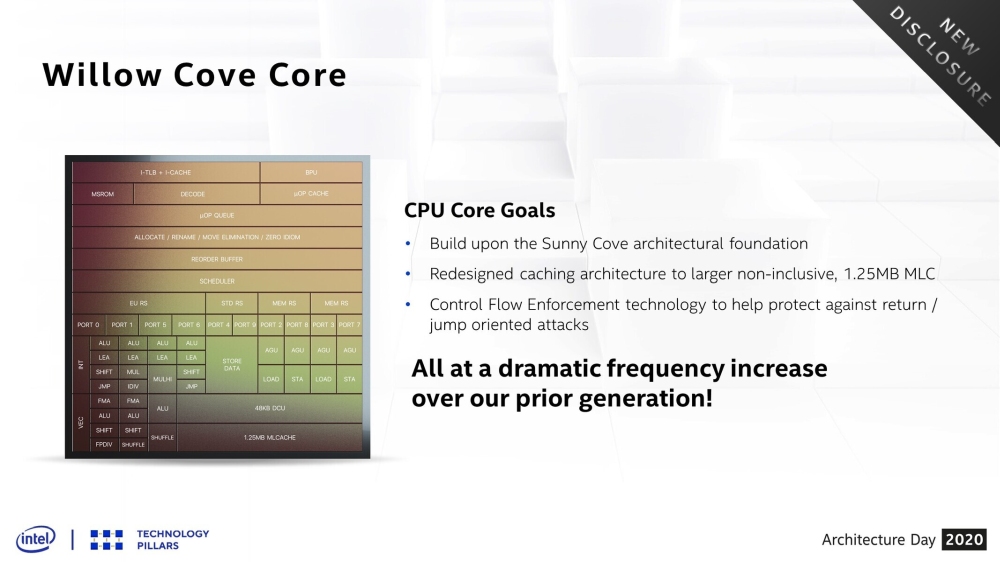Based on Intel's 10nm SuperFin manufacturing technology, which is pretty much 2nd generation 10nm, as it uses a redesigned transistor as well as capacitor design, described as SuperMIM capacitors and new FinFET transistors.
Although it is not a completely new manufacturing process but rather an internode, there are several improvements, including a 5x increase in capacitance and lowered resistance by 30 percent. In short, it will deliver significant energy efficiency improvements which are not 3-5 percent, as expected from an internode, but rather those expected from a brand new node.
Called a system-on-chip (SoC), Intel Tiger Lake features Willow Cove CPU cores paired up with Xe LP iGPU as its two main components. According to Intel, it will offer "more than a generation increase in CPU performance, massive iGPU improvements with Xe graphics, increased memory and fabric efficiency and rich I/O.

The Willow Cove seems similar to the Sunny Cove design in Ice Lake but with significant improvements in the cache department, with an increase in L2 cache to 1.25MB (up from 512KB), as well as an increase in L3 cache, to 12MB, shared between four cores on the Tiger Lake SoC. The Willow Cove CPU cores will also run on a significantly higher clock, mostly thanks to the 10nm SuperFin.


With an integrated memory controller, Tiger Lake will support up to 128GB of dual-channel LP5-5400, DDR4-3200, and LP4x-4267 memory, with up to 86GB/s of bandwidth.
The Xe LP as Intel's Gen2 iGPU will bring several improvements, including 2x performance gain compared to the Gen11 iGPU and it comes with 96 EUs, and up to 16MB of L3 cache of its own. We already wrote a bit about the Xe LP iGPU here, and when it comes to the media and display engine side, you'll get 2x increase in media encode/decode performance, with an ability to 8K/60FPS playback.

It will have support for AV1 hardware decode, HEVC screen content-coding, HDR and Dolby Vision playback acceleration, and a 12-bit end-to-end video pipeline. The display engine side brings DisplayPort 1.4, HDMI 2.0, Thunderbolt 4, and USB4 Type-C support with 4 display pipelines and dual eDP. It also supports 360Hz refresh rate with VESA Adaptive Sync.
Intel's Tiger Lake also supports Thunderbolt 4 and USB4, as well as PCIe 4.0 support with 4-lanes for M.2 NVMe slot.
Intel's Tiger Lake will bring some interesting ultraportable notebooks to the market in 2020, and it will be interesting to see how well it scales up to other form-factors and markets in the future. In any case, we are looking forward to see the SKU lineup of Intel Tiger Lake SoCs and how much Intel actually managed to pull from the new 10nm SuperFin internode.




